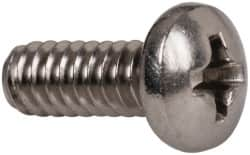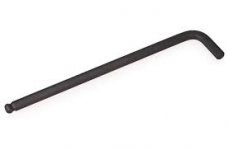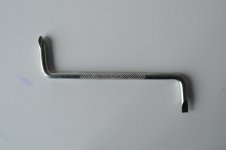And yes, this is the My_Ref Evolution as designed 10 years ago.
By the genius of the late Mauro Penasa.
The used opamp, the servo, the compensation, the BOM are strongly revisited in the mods, but the base circuit is always the same.
Ciao, George
By the genius of the late Mauro Penasa.
The used opamp, the servo, the compensation, the BOM are strongly revisited in the mods, but the base circuit is always the same.
Ciao, George
I used a “Full Evolution” with paralleled LM3886’s when first available to drive several types of speakers. The highest efficiency was 15 ohm Lowther Drives in a good folded horn. Actually had bass. These are 100 dB. Went to a pair of B&W 801 Marrix II’s. These are mid 80’s efficient and really pull some current. Worked great with both.
Not sure a single 3886 can deal with the big B&W’s but should be fine with high wfficiency
Not sure a single 3886 can deal with the big B&W’s but should be fine with high wfficiency
Interestingly, we found that the two versions give different results: as told, the single version was the latest try, equipped fully with Z-foil resistors and other things.
It did have a more vivid, resolved, lush sound. The double pump version was instead a more laid back, relaxed presentation but with such a grip performed with confidence, that we voted for that one in the nomination for contest.
So strangely the positive effect of a double pump shined through even with this highly efficient, 'high mobility' speaker..
It did have a more vivid, resolved, lush sound. The double pump version was instead a more laid back, relaxed presentation but with such a grip performed with confidence, that we voted for that one in the nomination for contest.
So strangely the positive effect of a double pump shined through even with this highly efficient, 'high mobility' speaker..
I would be the first one on the list for the double pump MY_REF EVOLUTION board if they were available. I am a happy owner of the My_Ref FE and I owned the parallel86 from neurochrome.com, both amps are great, I don't have the tools to measure distortions and that's why I was bugging Tom to do the comparison between his mod86 and My_Ref FE ( PA03 vs Parallel 86 vs Sympatico vs ?? ) .
Good point.. and complicated..
In the meantime I would like to underline that also the single pump version with the latest BOM (where we departed from the 10mF convention) and for low loads (4ohm) applied with decreased power rails (~+-28-30V) is showing a very convincing performance. Very good control (if not in direct comparison with the bigger brother).
Also the rectifiers are different and also this contribute to a not small amount.
(And all this could be tried in an FE version promptly..)
WAS tried and checked in FE amps of our friends!
In the meantime I would like to underline that also the single pump version with the latest BOM (where we departed from the 10mF convention) and for low loads (4ohm) applied with decreased power rails (~+-28-30V) is showing a very convincing performance. Very good control (if not in direct comparison with the bigger brother).
Also the rectifiers are different and also this contribute to a not small amount.
(And all this could be tried in an FE version promptly..)
WAS tried and checked in FE amps of our friends!
Last edited:
I don't have the tools to measure distortions and that's why I was bugging Tom to do the comparison between his mod86 and My_Ref FE ( PA03 vs Parallel 86 vs Sympatico vs ?? ) .
I'm working on it. I have the MyRef FE board assembled. I hit a road block because whoever did the PCB layout did not take into account that you need to access the LM3886 in order to mount it to the heat sink. There's no room to get a screwdriver in. I've now fitted one of my 0.4 K/W heat sinks with a stud so I can mount the LM3886 (hopefully), but have also run out of time again.
My schedule opens up more towards the end of April and I do want to get the MyRef FE measured and a review written before I forget my thoughts and can't decipher my notes. 🙂
Tom
I'm working on it. I have the MyRef FE board assembled. I hit a road block because whoever did the PCB layout did not take into account that you need to access the LM3886 in order to mount it to the heat sink. There's no room to get a screwdriver in.
Tom, maybe before criticizing you should have asked for help, I would have been happy to do it.
Anyway the LM3886 on the FE have to be mounted differently from the usual way, as indicated at page 26 of the build guide:
Fremen Edition - Google Drive
Using the correct hardware there's plenty of room.
Tom, maybe before criticizing you should have asked for help, I would have been happy to do it.
Or maybe you should have left enough space between the supply caps that one can get a screwdriver or hex key through. The output resistor may have to be rotated or scooted a little to the side. All I'm asking for is a gap of a few mm between the supply caps and maybe a few other small tweaks. You could do this without growing the board or affecting the performance of the circuit.
I think it's reasonable to expect these mechanical details to be taken into account during the layout process. I do it in all my layouts. Am I expecting too much?
Anyway the LM3886 on the FE have to be mounted differently from the usual way, as indicated at page 26 of the build guide:
Fremen Edition - Google Drive
Using the correct hardware there's plenty of room.
I do agree that using a stud, setscrew, or grub screw will get the job done. I ended up cutting a regular machine screw to make a stud. It works, but it's clearly an afterthought. The board I have is Rev. 1.6, so you've had plenty of revisions to address this.
Tom
Thread revival!
I have 100db sensitivity speakers in a 9m by 4m (2.7m high) room, I like to listen at reasonable volume and sit around 3.5m from the speakers. I use a passive pre and 5w per channel SE EL84 amp, I'd like a little more headroom but don't want too much extra gain in the setup and lose fine control at lower levels. Which of these 2 amps will be best for my system, the pot in the pre is 50k but I also have a 100k hanging around.
Seriously suggest a Pass (diy) amp.. look in the pass forums.
I built an F6 and it's alleged ~25 watts is More than adequate on my 94 db Tannoys.
I use maybe 3 watts .
Also the performance /sounds of a Firstwatt are a whole different league improvement over an Lm3886 chip amp.
Yess even these two arguing here. 100% provable by simply hearing it
The thing is simply exquisite .. by Any yardstick
Similar pricings as well 😉
Using the diyaudio shop kits. (when you can get 'em they sell out Quickly! Costs will be 200/300$.
Case work extra .. always is, regardless of circuit.
I would rather let your opinion without comment.
Just one thing:
"Case work extra .. always is, regardless of circuit."
It is 40 euro Galaxy288 for the above amp.
Just one thing:
"Case work extra .. always is, regardless of circuit."
It is 40 euro Galaxy288 for the above amp.
Tom, you are right. And fresh eyed critics is always good.
Thank you.
I would not call it a road block, though. Hell I mount and dismount the modules 10 times a measurement campaign. I use this: (an Allen key)
That's great! These are the screws I have: Pan head Philips. How will your Allen key work with these?

You're right. It's not the end of the world. It stopped me dead in my tracks because I don't have socket head screws available in M3. I have tons of pan head Philips screws. Getting the socket head machine screws would have required a trip to a specialized hardware store (open Monday-Friday, not on the weekend) as the common home improvement stores (which are open seven days a week) do not carry them. If Bolt Supply in Calgary doesn't have socket head screws, my easiest alternative is McMaster-Carr in the US. That'll be $3 for a bag of screws and about $25 in shipping. That's a lot to spend for one screw.
Now, if I could get my paws on Torx screws, your Allen key would work. At least I often find that an SAE size Allen key will work in a Torx screw as long as you don't torque it too much. Sadly, Torx screws are Bolt Supply / McMaster-Carr items too.
The hardware that is commonly available at the big box stores in North America are slotted and Philips head screws. In Canada you find the Robertson head (aka square drive) or a Robertson-slotted combo head as well.
If you're going to sell your stuff world wide, I suggest that you take into account the parts and hardware availability world wide into account. I do in my designs...
Tom
Last edited:
Tom,
For screws and small parts, sometimes AliExpress can be quite handy - 50 * M3 (hex-head) screws for less than $2.00:
DRELD 50Pcs M3 Stainless Steel Screws Allen Hex Socket Head Screw Bolt Fastener M3*6/8/10/12mm/14mm/16mm/18mm/20mm/25mm/30mm-in Screws from Home Improvement on Aliexpress.com | Alibaba Group
For screws and small parts, sometimes AliExpress can be quite handy - 50 * M3 (hex-head) screws for less than $2.00:
DRELD 50Pcs M3 Stainless Steel Screws Allen Hex Socket Head Screw Bolt Fastener M3*6/8/10/12mm/14mm/16mm/18mm/20mm/25mm/30mm-in Screws from Home Improvement on Aliexpress.com | Alibaba Group
Tom, while You are principally right, I would like to note that since I started to use hex-head screws I don't want to know about else.. they are robust, don't need the pressing like with Philips ones (what a sress, one slip and you are ~done.. ) with the right (Allen) tool one can drive them from angled positions..
And Yes, me too (can) use my Torx screwdriver to tighten them ☺
Ciao, G
And Yes, me too (can) use my Torx screwdriver to tighten them ☺
Ciao, G
Last edited:
Oh, I wholeheartedly agree that there are much better screws than Philips, though with the right driver (such as the Wera Lasertip), Philips are quite usable and, more importantly, readily available. Personally I'm more of a Torx guy. Apparently there's a TorxPlus now too, which is supposed to be even better.
The ball tip Allen keys are indeed handy, though I strongly doubt you'd be able to get one into the LM3886 in the MyRef FE. It's a pretty steep angle.
Tom
The ball tip Allen keys are indeed handy, though I strongly doubt you'd be able to get one into the LM3886 in the MyRef FE. It's a pretty steep angle.
Tom
Last edited:
Yes, the chip mounting bolt is a major PITA in the MyRef. There are a few alternatives such as hex head socket and allen wrench. I found mine at a local Ace hardware store. Then the problem is getting a wrench small enough to fit! The short arm of the wrench can be further shortened with a grinder to allow it to clear the resistor. I always leave the heatsink off the resistor until after the chip is mounted. Still requires some wrangling, but it's not impossible. After you do it as many times as I have, it almost gets easy.
Another alternative I've used is to clamp the 3886 with a small piece of aluminum flat stock straddling the chip. Then you need to make TWO tapped holes in the heatsink, but you can use larger size bolts moved to a somewhat more convenient location. This is a more flexible and very robust arrangement, but be careful that the aluminum clamp does not break or abrade through the insulation on the chip. Rounded edges and a piece of electrical tape on the clamp is enough to ensure that.
The board design could probably be altered to allow better access without impairing performance. Once you build the MyRef and hear how good it sounds, perhaps you'll want to undertake a redesign. 😉
Peace,
Tom E
Another alternative I've used is to clamp the 3886 with a small piece of aluminum flat stock straddling the chip. Then you need to make TWO tapped holes in the heatsink, but you can use larger size bolts moved to a somewhat more convenient location. This is a more flexible and very robust arrangement, but be careful that the aluminum clamp does not break or abrade through the insulation on the chip. Rounded edges and a piece of electrical tape on the clamp is enough to ensure that.
The board design could probably be altered to allow better access without impairing performance. Once you build the MyRef and hear how good it sounds, perhaps you'll want to undertake a redesign. 😉
Peace,
Tom E
Talk about making a "mountain out of a mole hill"!
Monoblock My_Ref boards, of all flavours, have been like this for over a decade, and It hasn't stopped hundreds of amps being built.
Yes, a small gap between the filter caps would be useful, but its not a difficult issue to overcome.
This is what I used.
It cost less than $1 at a local hardware store. Its a bit more fiddly than a normal screwdriver, but it gets the job done.
Monoblock My_Ref boards, of all flavours, have been like this for over a decade, and It hasn't stopped hundreds of amps being built.
Yes, a small gap between the filter caps would be useful, but its not a difficult issue to overcome.
This is what I used.
It cost less than $1 at a local hardware store. Its a bit more fiddly than a normal screwdriver, but it gets the job done.
Attachments
Looks kinda like an IKEA tool. 🙂 You won't be able to get a lot of torque on the mounting screw with that, unfortunately. A hex key or Torx would be much better.
Tom
Tom
Looks kinda like an IKEA tool. 🙂 You won't be able to get a lot of torque on the mounting screw with that, unfortunately. A hex key or Torx would be much better.
Tom
How much torque is needed? - we aren't tightening cylinder head bolts!
I just tightened the screw until it was firm. To go any further would have risked stripping the aluminium threads.
Its a trivial tool, for what is essentially a trivial job.
It may not be a cylinder head, but the THD does degrade if the LM3886 isn't firmly fastened against the heat sink. I know because I've measured it...
As long as you can get enough pressure into the screw head that the tightening tool doesn't slip, you should be fine.
If I'm going to the hardware store to buy another tool, I might as well just pick up the socket head screws like Joseph K suggested. 🙂 Better solution. Better tool for the job.
Meanwhile, my solution of creating a stud from a longer machine screw will work too.
I still argue that designing the layout to allow for easy assembly is the best solution. You can easily do this without sacrificing any performance as I've pointed to earlier. Considering there appears to be a new group buy going for the MyRef FE, this would be the perfect time to improve this aspect of the layout. All I am doing is providing feedback. It's up to the layout person to decide whether my feedback is useful to them and whether it warrants inclusion in the layout.
Tom
As long as you can get enough pressure into the screw head that the tightening tool doesn't slip, you should be fine.
If I'm going to the hardware store to buy another tool, I might as well just pick up the socket head screws like Joseph K suggested. 🙂 Better solution. Better tool for the job.
Meanwhile, my solution of creating a stud from a longer machine screw will work too.
I still argue that designing the layout to allow for easy assembly is the best solution. You can easily do this without sacrificing any performance as I've pointed to earlier. Considering there appears to be a new group buy going for the MyRef FE, this would be the perfect time to improve this aspect of the layout. All I am doing is providing feedback. It's up to the layout person to decide whether my feedback is useful to them and whether it warrants inclusion in the layout.
Tom
Last edited:
- Home
- Amplifiers
- Chip Amps
- Modulus 86 or Fremen Edition

